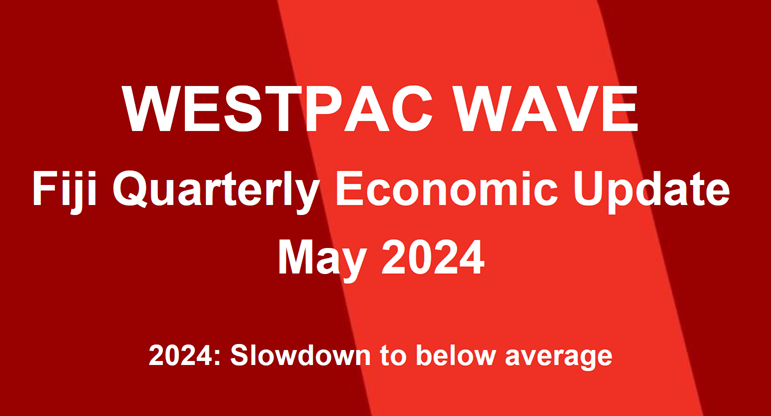
Fiji’s economic outlook is expected to shift from high growth experienced last year to a slower pace, falling below the historical trend at 2.5 percent in 2024.
This, according to the Westpac Bank’s Fiji Quarterly Economic Update which was released today.
Westpac says factors such as increased inflation, high outward migration, and subdued growth in trading partner economies are anticipated to pose considerable challenges to domestic demand.
However, there are signs of resilience, notably from rising visitor arrivals and remittance inflows, offering some support amidst these challenges to the outlook.
Westpac also says the investment landscape presents “a mixed picture” – with encouraging signs of optimism from notable increase in domestic cement and domestic credit.
However, there is some concern due to a slight decline in new investment lending to private individuals as well as building and construction sector, reflecting cautious sentiments.
On the tourism front, the sector achieved full recovery in 2023, marked by a record number of visitor arrivals and increased earnings. Despite initial concerns about a slowdown in source markets like Australia, New Zealand, and the United States, the tourism sector has been surprisingly resilient coming into the first quarter of 2024 with significant increase in visitor numbers.
Westpac says domestically, since July 2023, rising prices attributed to VAT rate hikes, high global shipping costs, rising commodity prices and recent floods, pose some challenges. Headline inflation in Fiji is expected to remain elevated for the first half of 2024, before it starts trending downward in later half of the year. Fiji’s financial system remains stable, indicated by healthy and adequate foreign reserves and liquidity levels.
On fiscal side, in the first half of the 2023-2024 financial year, Government experienced a net deficit of $114.9 million, amounting to -0.9 percent of Gross Domestic Product (GDP), compared to the budgeted net deficit of -5.6 percent. Government debt stood at $10,019.6 million or 75.9 percent of GDP as of January 2024, which is projected at 78.6 percent of GDP by fiscal year-end.